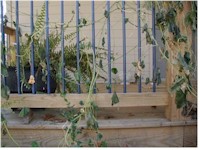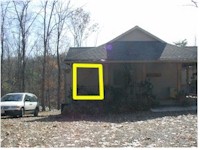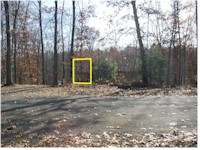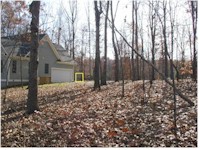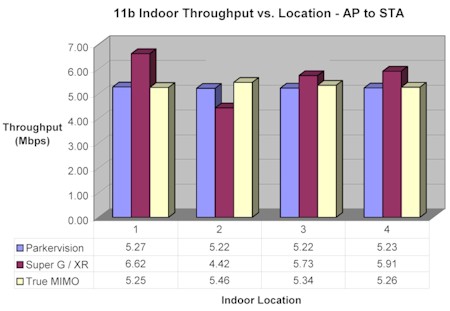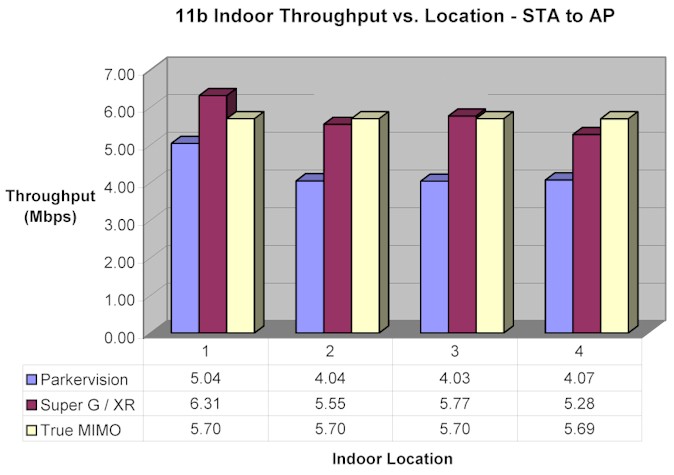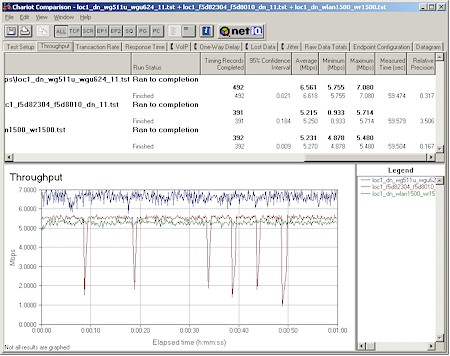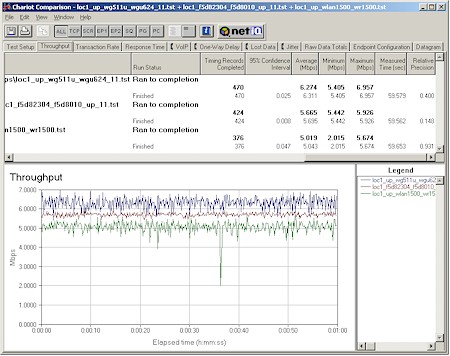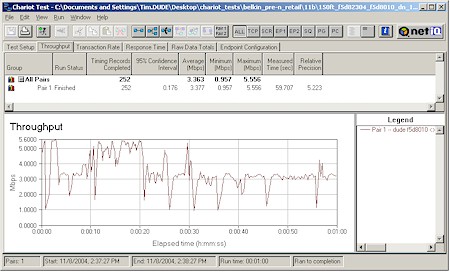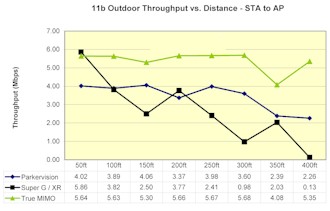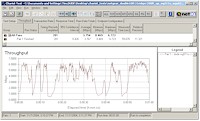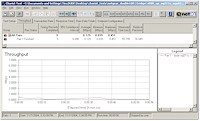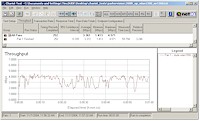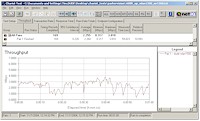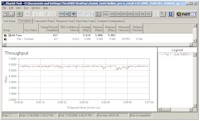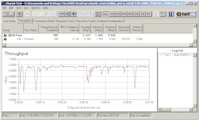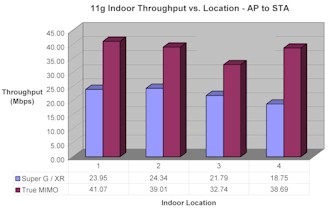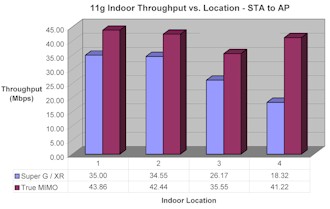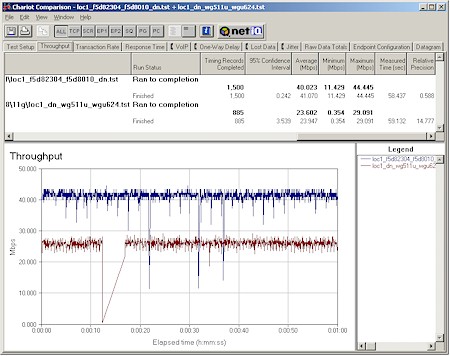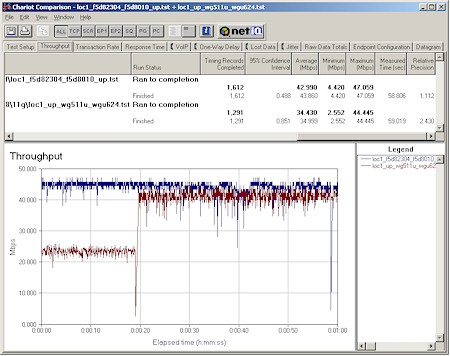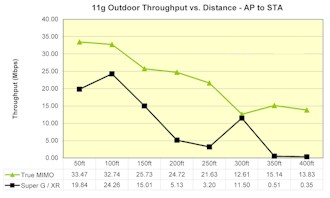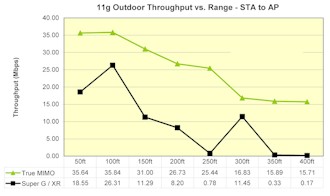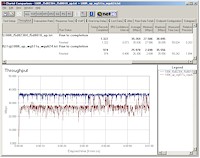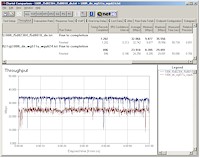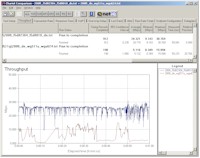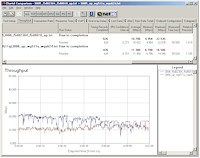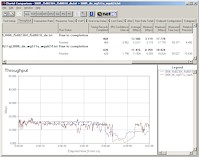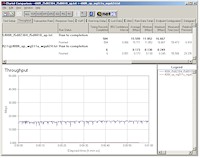Introduction
The Holy Grail sought by every marketeer of consumer WLAN products has seemed to be whole-house coverage with speeds capable of supporting multiple digital video streams. Although widespread need for this “requirement” still seems aways off, any wireless product that promises wider range or faster speed is sure to fly off the shelf.
The latest campaign in the battle for your wireless networking bucks are products that promise both higher speed and extended range. (A more recent development is the rediscovery of 802.11a by consumer networking vendors as the latest “solution” for reliable video streaming – this from the same folks who until now have been telling you that “enhanced 802.11g” was the solution for the very same thing. But I’ll leave that for another article.)
In this article, I’ll take a look at two technologies that make this claim: Airgo Networks’ True MIMO and Atheros’ Super G with XR. I’ll also look at how these two fare against ParkerVision’s D2D Technology – which currently supports only 802.11b speeds and makes no speed enhancement claims.
NOTE: In the interest of full disclosure, you should know that I was contracted by Airgo Networks to perform an evaluation of engineering samples of pre-release Pre-N products. However, all testing presented in this report was performed on released, Belkin Pre-N product.
The Technologies
The three range-extension technologies I’ll be comparing all focus on improving receiver performance vs. boosting transmit power, but take different approaches. I’ll try to summarize each approach in simple terms, but less geek-inclined readers may wish to skip this section.
ParkerVision’s D2D (Direct2Data) patented technology uses a process dubbed RF Energy Sampling to more efficiently extract digital data from the RF carrier that it rides on. The basic approach is to take large samples – in some cases 1/2 a sine wave per sample – vs. the very small samples taken by conventional RF digital conversion methods. D2D also eliminates the need for RF carrier filtering and the signal loss it may cause. The result is a claimed open-field range of 1500 feet and guaranteed “whole-house” coverage (or your money back!).
![]() NOTE: ParkerVision’s WLAN products currently support only 11Mbps 802.11b operation. But a company spokesperson said that faster 802.11g-based D2D products will be hitting the market in Q1 2005.
NOTE: ParkerVision’s WLAN products currently support only 11Mbps 802.11b operation. But a company spokesperson said that faster 802.11g-based D2D products will be hitting the market in Q1 2005.
Atheros XR (eXtended Range) also focuses on enhancing receiver sensitivity – they say down to -105dBm. This is 20dB (100X) better than the 802.11 spec requires and comparable to the receivers in some cell phones. Atheros’ white paper says that the secret sauce used by XR is enhancement of its “MAC and PHY technology to support very low signal to noise (SNR) operation”. XR also adds transmission rates “equivalent to” 3, 2, 1, 0.5 and 0.25Mbps that its adaptive rate algorithm can use to maximize throughput while maintaining a stable wireless connection.
Tip: Download the XR white paper (PDF) here.
Airgo Networks’ True MIMO has the magic “MIMO” (Multiple Input Multiple Output) buzzword to flaunt, but the technology is more than just buzz. MIMO uses multiple transmitters and receivers – each with their own antenna – and a healthy dose of signal processing to improve effective signal-to-noise performance by at least 10dB (10X) and up to 15dB (almost 30X). Another key MIMO advantage is that it actually works better in the high multipath environments encountered in most indoor environments. (Multipath is the phonomenon where signals bouncing off physical obstacles arrive at different times at a receiver.)
Tip: Download a Farpoint group white paper on True MIMO (PDF) here.
Note that all three technologies require that they be present both in access points (or wireless routers) and client adapters in order to produce the promised performance improvements.
While I’ve concentrated on the range extension aspects of this trio of technologies, there are also speed improvements provided by Atheros and Airgo’s chipsets. Atheros’ Super G technology uses four techniques to increase throughput beyond the 54Mbps provided by standard 802.11g products:
- Data compression (such as you get when you ZIP a file)
- Fast frames (which groups packets together and cuts down wait time between data frames)
- Packet Bursting (which takes advantage of 11g’s higher speed and sends more data in an alloted time slot)
- Dynamic Turbo
The Dynamic Turbo technique (formerly called channel bonding) has been the most controversial because it presses two channels into service to double the effective bandwidth – a non-standard use of spectrum, alleged by competitor Broadcom to cause interference with non-Super G products. I examined the alleged “bad neighbor” affects of channel bonding in the Atheros Super-G NeedToKnow – Part 1 and Part 2 and didn’t find the effects as severe as Broadcom claimed.
But Atheros has since taken no chances and incorporated an Adaptive Radio feature into Super G. This feature monitors the entire 802.11g band and automatically increases throughput only when channels are available – something that the original Super G supposedly did in the first place.
At any rate, Airgo’s True MIMO avoids the “bad neighbor” rap by maximizing spectral efficiency rather than simply grabbing more spectrum. This means True MIMO devices can transmit more bits per second using the same chunk of frequency than non-MIMO methods. Thus, Airgo’s current True MIMO implementation can yield 5.4 bps/Hz (bits per second per Hertz) vs. the 2.7bps/Hz provided by standard 54Mbps 802.11g. Put into consumer-marketing terms, True MIMO’s maximum data rate is 108Mbps – the same as touted by Atheros’ Super G technology – and requires only a single standard 802.11b/g channel.
Enough with the background, let’s take a quick look at the embodiment of these technologies that I put to the test.
The Products
Whizzy technology is nice, but it’s the application of technology that makes the world go ‘ round. So to check out the technologies, I turned to actual retail products. This article is not really intended as a full review of any of the products that I tested – I intend to do that later for at least some of them. But I’ve entered all of them into our Product Guide database (which you can access via the links below), so you can at least compare their specs and features.
In the Super G / XR corner are NETGEAR’s newly-spawned “Double 108Mbps” products – the WGU624 router and WG511U CardBus card. I chose these rather than NETGEAR’s WGT624 and WG511T 108Mbps router and CardBus card because I wanted to be sure that I was testing something with the latest and greatest Atheros technology.
Both products are actually dual-band 802.11a/b/g products incorporating Atheros Super G and Super AG technology with Adaptive Radio (AR) and eXtended Range (XR). Note that Atheros’ Super-G / XR technology is currently the only extended-range technology available in products from multiple vendors.
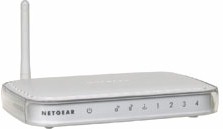
Figure 1: NETGEAR WGU624 Double 108 Mbps
|
|
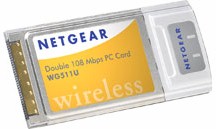 Figure 2: NETGEAR WG511U Double 108 Mbps Wireless PC Card |
The only currently-available representitives of Airgo’s True MIMO technology are Belkin’s “Pre-N” products – the F5D8230-4 Wireless Pre-N Router and F5D8010 Wireless Pre-N Notebook Network card.
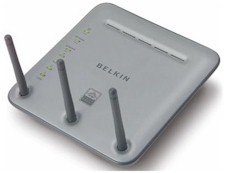 Figure 3: Belkin Wireless Pre-N Router |
|
 Figure 4: Belkin Wireless Pre-N Notebook Network Card |
ParkerVision’s D2D Technology is also sole-sourced – from ParkerVision itself. Although D2D makes no speed-enhancement claims, and supports only 802.11b’s lower 11Mbps maximum data rate, I included it in the test since 802.11b is just fine for many applications. So, I checked out the WR1500 4-port Wireless DSL/Cable Router and WLAN1500 PC Card LAN Adapter.
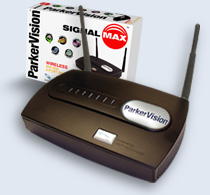 Figure 5: ParkerVision WR1500 4-port Wireless DSL/Cable Router |
|
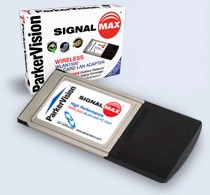 Figure 6: ParkerVision WLAN1500 PC Card LAN Adapter |
The Setup
Since I needed to really put the extended-range claims to the test, I ran both indoor and outdoor tests. My indoor tests used the same four location techniques that I use for all my wireless tests, which you can find described here.
For my outdoor testing, I set up a test range, which included both indoor and outdoor portions as shown in Figure 7. Each wireless router was set on a shelf approximately 4 feet (1.2M) high in my office at the rear of my home.
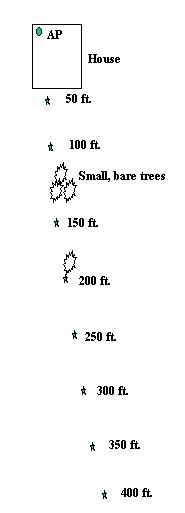 Figure 7: Outdoor Range Map |
The first outdoor test point was 50 feet from the AP and about 6 feet lower than it. Successive test points were spaced at 50 foot (15M) intervals – give or take about 3 feet (1M) – at varying heights as determined by the relatively-level terrain. The test notebook rested on a 3 foot (1M) high non-metallic stand and the wireless adapter’s antenna was pointed toward the AP at each location. The test range was not what I’d call “open field” since there were a few trees inside the range as shown in the diagram. Fortunately, fall has hit in force where I live and most of the leaves were off the trees and saplings that stood between my notebook and the AP under test. To give you a better idea of the environment, take a look at the pictures in Figures 8 through 11. Since the target area is a wee bit hard to see, I’ve outlined it with a yellow box in Figures 9 – 11. All tests used IxChariot on my 1GHz Notebook running WinXP SP2 with the other endpoint running on a dedicated Athlon64 3000+ WinXP Pro SP2 system connected to the router under test via my LAN’s 10/100 switch. I used the standard IxChariot throughput script, TCP protocol with 100,000 Bytes of data per transfer for the 11b tests and 200,000 Bytes per transfer for the 11g tests. I ran 1 minute tests in both uplink (STA to AP) and downlink (AP to STA) directions. The numbers you’ll see are the average throughput results calculated by IxChariot. |
11b results – Indoor
Since I wanted as close to an apples-to-apples comparison with the 802.11b-based ParkerVision gear, I set the NETGEAR router to b & g mode (there is no b-only mode) and the card to its 11b only mode. Forcing the Belkin gear to 11b mode was a little trickier, since neither the card nor the router has settings to allow this. Fortunately, with a little help from Belkin, I was able to get the router into an 11b-only mode so that I could run the tests.
Figures 12 and 13 show clustered bar charts of the indoor test results. The chart type was used because the indoor test locations aren’t at successive distances from the AP under test.
The downlink (AP to STA) tests show very consistent performance for the ParkerVision D2D and True MIMO products. The Super G / XR had a surprisingly-high 6.6Mbps closest-range (Location 1) throughput, something I don’t think I’ve ever seen in 11b-only products. Throwing a few walls and / or floors in the way, knocks throughput down a bit, but Super-G ended up besting the other two technologies in three out of four downlink tests.
Figure 12: 11b Indoor Throughput vs. Location – AP to STA
(click on the image for a larger view)
The uplink tests were interesting in that both the D2D and Super G / XR products’ throughput hovered in the high 5Mbps range, while the D2D product dropped down to the 4Mbps range. Despite these differences, I’d say that any of the products would provide reliable “whole-house” coverage at 11b speeds.
Figure 13: 11b Indoor Throughput vs. Location – STA to AP
(click on the image for a larger view)
The next IxChariot plots will give you an idea of the throughput variation of the products at the indoor locations. I’ll start with AP to STA and STA to AP plots at best-case Location 1 (Figures 14 and 15).
Figure 14: 11b Indoor Throughput – Location 1, AP to STA
(click on the image for a larger view)
Both plots show that everyone is well-behaved, which I’d expect with router and client sitting within 6 feet of each other! Plots of tests taken at the other three indoor locations (not shown) show similar well-behaved throughput.
Figure 15: 11b Indoor Throughput – Location 1, STA to AP
(click on the image for a larger view)
11b results – Outdoor
While such complete indoor coverage is nice, an outdoor range test provides an even better test of extended-range claims. Part of my “outdoor” test actually includes having the signal traverse about 40 feet of indoor space, including a few sheetrock interior walls and one exterior wall. So while it’s not an entirely outdoor test, it provides some insight into potential use of these technologies for sharing signals with outbuildings or across-the-street neighbors, without having to go through the hassle of putting the wireless router outdoors.
Figure 16 shows a comparative plot of 11b downlink performance, with the results showing that the True MIMO products have a slight edge over the ParkerVision. The loser in this match is Super G / XR, whose performance falls off steadily with distance. Note that all three products made it out to 400 feet, which is no small feat in itself! But while the NETGEAR Super G / XR gear was just about at its range limit, both the D2D and True MIMO appeared to still have some distance left in them. Unfortunately, I didn’t, so 400 feet is where my testing stops.
Figure 16: 11b Outdoor Throughput vs. Distance – AP to STA
(click on the image for a larger view)
The low 150 foot throughput for True MIMO can be explained by examining its plot in Figure 17. The pattern indicates a shift from 11 to 5.5Mbps transmit rate, which I confirmed by watching the client application’s display during testing. I’m not quite sure why the downward shift occurred, other than just as a part of normal range-shifting algorithms.
Figure 17: 11b 150ft Outdoor Throughput – Belkin, STA to AP
(click on the image for a larger view)
Figure 18 shows a similar dip in the uplink tests at 350 feet for True MIMO, which recovered to higher throughput at 400ft. Looking at the IxChariot plot (not shown) for that test shows a pattern indicating constant rate shifting between 11 and 5.5Mbps. Once again, the Super G / XR products start out strong, but slow down with distance. The D2D gear also shows a similar, though not as marked, downward trend. The clear winner, however, is True MIMO, which was chugging along above 5Mbps at 400ft!
Figure 18: 11b Outdoor Throughput vs. Distance – STA to AP
(click on the image for a larger view)
Figures 19 through 24 show IxChariot throughput plots for the three technologies at 200 and 400 foot locations. These plots will give you an idea of how steady the throughput is, which for the D2D and True MIMO products was surprisingly good!
Other performance observations are that average latency (ping times) for all products was about 1mS out to around 300ft. I also ran spot checks of UDP streaming tests at 500kbps with Qcheck, which generally came in at or slightly under 500kbps with 0% lost packets for uplink tests.
I noticed, however, that downlink streaming for the ParkerVision products took a large throughput hit with high packet loss (example: 235kbps and 52% loss), even with client and router right next to each other! No such problem was seen in the uplink direction, so this one’s a puzzler. Actually, the Super G / XR and True MIMO products also had impaired downlink UDP streaming, but with only single-digit packet loss percentage and about 25 to 50kbps loss of throughput.
11g results – Indoor
Now that you know the drill, you can puruse the 11g results plots pretty much on your own, and I’ll try to keep commentary to a minimum. This time you’ll see only True MIMO and Super G / XR results, since the ParkerVision D2D router and client operate at 11b speeds only.
Figure 25: 11g Indoor Throughput vs. Location – AP to STA
(click on the image for a larger view)
The results for the True MIMO-based products are amazingly good, with average uplink and downlink speeds at all test locations remaining above 30Mbps and closer to 40Mbps in most locations. The Super G / XR gear doesn’t do quite as well, but still turns in results better than any other 11g products I’ve tested, which usually have problems with my downstairs test location 3.
Figure 26: 11g Indoor Throughput vs. Location – STA to AP
(click on the image for a larger view)
Figures 27 and 28 provide some insight into Super G / XR’s lower throughput. The uplink comparison in Figure 27 looks like True MIMO is really whuppin’ Super G / XR’s butt. But Figure 28 shows the throughput jump characteristic of Super G’s switch to channel bonding, oops, make that Dynamic Turbo mode. I ran some long test runs and found that the shift back and forth occurs approximately every 2 minutes.
So my 1 minute test runs sometimes caught it kicked in, sometimes not, and other times in both modes. At any rate, the constant shifting means that Super G has a built-in throughput disadvantage vs. True MIMO, which doesn’t have such a mechanism.
At any rate, both technologies produce reasonably stable throughput under indoor close-range conditions.
Figure 27: 11g Indoor Throughput – Location 1, AP to STA
(click on the image for a larger view)
Figure 28: 11g Indoor Throughput – Location 1, STA to AP
(click on the image for a larger view)
11g results – Outdoor
Figures 29 and 30 show True MIMO delivering consistently higher throughput at all outdoor test locations, in both uplink and downlink directions. The results also show that Super G / XR has run out of steam by 350 feet, while True MIMO is still delivering better than 13Mbps uplink and 15Mbps downlink at 400 feet! This is phenomenal performance, the likes of which I’ve never seen until now.
Figure 29: 11g Outdoor Throughput vs. Distance – AP to STA
(click on the image for a larger view)
Figure 30: 11g Outdoor Throughput vs. Distance – STA to AP
(click on the image for a larger view)
This time, I’ve provided comparison throughput plots in both uplink and downlink directions for 100, 200, 300 and 400ft test locations. (Since there are only two products per plot, it’s easy to tell them apart.)
Don’t ask me why the Super G / XR stuff got a throughput kick at 300ft, or why the downlink plots show a similar throughput drop and recovery for both the NETGEAR and Belkin products at around 40 seconds into the plot. The second phenomenon is especially strange, since the test runs were done on different days!
Wrap Up and Conclusions
So now that you know how fast these products go, what to buy? If you are looking for whole-house wireless coverage for primarily data needs (email, web browsing) and maybe some audio streaming, then any of these products will do. But the least desirable from a price / overall performance view are the ParkerVision products, because they are limited to 802.11b speeds (5Mbps or so), yet still charge a very hefty premium. I mean, really folks, with the going rate for 11b cards at around $15 and routers around $20 (with rebates), who can justify spending $80 for an 802.11b D2D CardBus adapter and $160 for a router?!
Updated 11/27/2004 As of 11/22/204 ParkerVision reduced the price of its router to $99.99 and the card and USB adapters to $79.99 each. While this is a welcome step in the right direction, the products still have a significant price premium compared to other 802.11b products.
So that narrows the field to Super-G based products and the Belkin Pre-N. Again, either of these products will serve you well for whole-house coverage, but at speeds fast enough for heavy data networking plus video and audio streaming. The Pre-N gear, however, will give you more speed margin, since speeds in my indoor tests tended more toward 40Mbps vs. 20Mbps for the NETGEAR Super-G products. If you want to reach beyond your four walls, however, yet keep speeds high, the clear choice is Belkin’s Pre-N duo, which clearly delivered more stable throughput, even at very long distances.
Since Super-G based products are available from multiple vendors, you’ll have more flexibility with pricing if you go that way. As I write this, you can pick up the single-band (11b/g) equivalents of the WGU624 and WG511U – the WGT624 and WG511T – for as little as $70 and $45 respectively, or $55 after rebate from Amazon in the form of the WGTB511T Wireless Super G Kit. If you decide to spring for the “Double 108” pair that I tested, you’ll end up spending around $160 vs. around $230 – $250 for a Belkin Pre-N setup, which is 11b/g only. I expect prices to stay high until other manufacturers come out with Airgo-based products, which I wouldn’t expect until early in 2005 from what I hear.
It’s clear that Airgo has really come up with something special with its True MIMO technology, which is the clear throughput vs. range winner in my testing. But before you rush out to buy Belkin’s Pre-N products, keep a few things in mind.
First, “Pre-N” is neither 802.11n, nor can even be considered “pre-802.11n”. I’m not just saying this to keep the Wi-Fi Alliance happy – who has threatened WLAN certification excommunication to any vendor that even infers that its products have 802.11n capabilities. Instead I went right to the source and asked Airgo for their official position on the upgradability of True MIMO-based products to 802.11n when the standard is ratified. Carl Temme, Airgo’s Director of Marketing, had this response:
“Pre-n is shorthand for “Wi-Fi compatible 802.11a/b/g products that offer MIMO OFDM extensions.” Pre-n gives the significant benefits of 802.11n along with Wi-Fi compatibility today.
Pre-n does not mean interoperability with future 11n products in the 11n modes. To the extent that 802.11n products coexist nicely in the network with Wi-Fi products (which we all should hope and believe that
they will) it means that 802.11n will coexist with pre-n products.”
While this doesn’t directly answer the question of whether Airgo “Pre-N” products will be able to be upgraded to 802.11n products, it does say that Pre-N will nicely coexist with 802.11n products when they come along. The bottom line is that you should not expect that Airgo True MIMO-based products will be upgradable to 802.11n…at least not at this point with 11n ratification over a year away by most accounts.
Second, if wireless bridging and repeating or ability to attach higher-gain antennas is important to you, then you’ll be disappointed, since the Belkin products support neither. I don’t know that this is a big deal, though, given the phenomenal range provided with the product as is.
Finally, realize that the current Pre-N products still are 2.4GHz (802.11b/g) based, and that spectrum is crowded and getting more so every day. So if you’re struggling with interference from neighboring 11b/g networks, you won’t find any relief by switching to Belkin’s Pre-N products. Note also that I haven’t addressed in this report how well Pre-N products play in mixed networks. My preliminary tests say it plays well, but this important subject bears a closer look, which you should expect soon.
In the meantime, if you’re looking for the fastest, longest range 2.4GHz consumer wireless stuff currently on the planet, then Belkin’s Pre-N based on Airgo Networks’ True MIMO is it. It’s real. It works. And it will simply amaze you.

